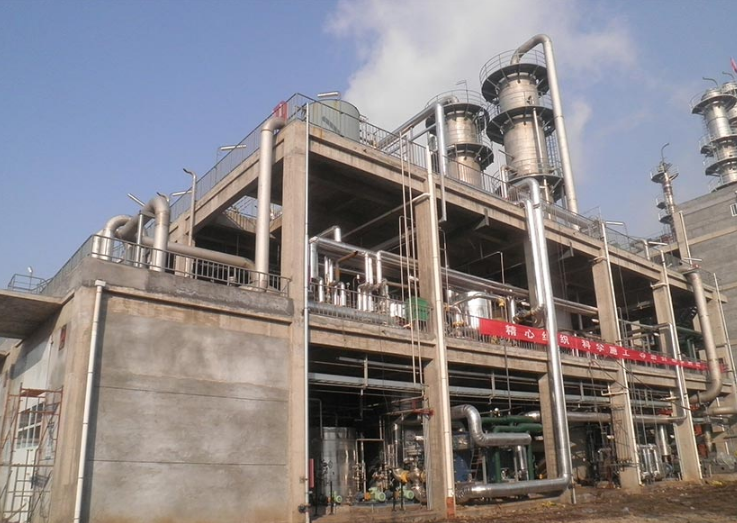Introduction
Formaldehyde (CH2O) represents a colorless, yet highly perilous, and inflammable gas when situated at room temperature. This compound plays a pivotal role in various sectors including the manufacturing of fertilizers, paper products, plywood, food preservatives, and a host of industrial processes. Meanwhile, a foundry serves as a specialized facility tasked with the creation of metal castings. This intricate operation involves the liquefaction of metals, subsequently pouring the molten metal into molds to yield precise configurations.
After reading this article, you will attain comprehensive insights into the multifaceted application of formaldehyde within the realm of foundries. Furthermore, we shall embark on an exploration of the potential perils associated with the extended exposure of laborers to formaldehyde. Delving deeper, we will elucidate effective strategies aimed at ensuring a secure work milieu for foundry operatives. Finally, we shall conclude with an advanced guide, shedding light on further intricacies in this domain.
●Applications of Formaldehyde in Foundries:
1. Sand Binders: Formaldehyde-based resins are commonly used as binders in sand molds and cores. These resins help create strong and durable molds that can withstand the high temperatures of molten metal during casting.
2. Coatings and Adhesives: Formaldehyde-based coatings and adhesives are used in foundries for various purposes, such as coating molds to improve surface finish or bonding components together.
●Potential Hazards and Health Effects:
1. Health Hazards: Formaldehyde is a potent irritant to the eyes, nose, and respiratory system. Prolonged or high-level exposure to formaldehyde can lead to health issues such as respiratory irritation, asthma, and skin sensitization.
2. Carcinogenicity: Formaldehyde is classified as a known human carcinogen by several health organizations, including the International Agency for Research on Cancer (IARC). Prolonged exposure to high concentrations of formaldehyde has been associated with an increased risk of certain types of cancer, including nasopharyngeal cancer and leukemia.
3. Air Quality Concerns: When formaldehyde-containing materials are used in foundries, formaldehyde gas can be released into the air. Inadequate ventilation can lead to elevated levels of formaldehyde in the air, potentially affecting the health of workers.

●Effective strategies for foundry operatives:
To ensure the safe use of formaldehyde in foundries, several control measures should be implemented:
1. Substitution: Consider using formaldehyde-free alternatives, such as water-based binders or other non-formaldehyde resins, whenever possible. This can help reduce the potential exposure to formaldehyde.
2. Engineering Controls: Implement engineering controls, such as local exhaust ventilation, to capture and remove formaldehyde vapors from the work area. Adequate ventilation is crucial to maintaining low airborne concentrations of formaldehyde.
3. Personal Protective Equipment (PPE): Provide appropriate personal protective equipment to workers, including gloves, eye protection, and respiratory protection, as necessary. PPE should be used in conjunction with other control measures, such as engineering controls and good hygiene practices.
4. Training and Education: Ensure that all workers are trained on the safe use of formaldehyde and its potential hazards. Workers should be aware of the signs and symptoms of formaldehyde exposure and the importance of following safety protocols.
5. Good Hygiene Practices: Encourage good hygiene practices, such as regular handwashing and avoiding touching the face or eyes after handling formaldehyde-containing materials.
6. Monitoring and Testing: Regularly monitor the air quality in the work environment to measure formaldehyde concentrations and ensure that they are within acceptable limits.
7. Storage and Handling: Store formaldehyde-containing materials in well-ventilated areas, away from sources of heat or ignition. Follow proper handling procedures to minimize the risk of spills or releases.
8. Waste Management: Dispose of formaldehyde-containing waste properly and in accordance with local regulations. Avoid pouring formaldehyde down drains or releasing it into the environment.
9. Emergency Response: Have appropriate emergency response procedures in place in case of accidental spills or exposure incidents. Train workers on how to respond to emergencies involving formaldehyde.
●Safety Advanced Guidelines:
Adhering to the following safety guidelines can further enhance the safe use of formaldehyde in foundries:
1. Use Formaldehyde in Well-Ventilated Areas: Ensure that all areas where formaldehyde is used have adequate ventilation to prevent the buildup of formaldehyde vapors.
2. Minimize Exposure: Use formaldehyde-containing materials only when necessary and in the minimum quantities required for the process.
3. Conduct Regular Safety Inspections: Regularly inspect equipment, ventilation systems, and personal protective equipment to ensure they are in good working condition.
4. Provide Medical Surveillance: Consider implementing a medical surveillance program for workers who handle formaldehyde to monitor their health and detect any potential adverse effects early.
5. Store and Label Properly: Store formaldehyde-containing materials in appropriately labeled containers to prevent accidental exposures.
6. Monitor Exposure Levels: Regularly measure formaldehyde concentrations in the air to ensure that they remain within acceptable limits.
●Conclusion:
Formaldehyde plays a significant role in foundries as a binder for sand molds and cores and in various coatings and adhesives. However, its use requires careful attention to ensure worker safety and prevent environmental pollution. The potential health hazards of formaldehyde, such as respiratory irritation and carcinogenicity, necessitate the implementation of control measures, including proper ventilation, personal protective equipment, and worker training. By following safety guidelines and adhering to best practices, foundries can harness the benefits of formaldehyde while safeguarding the health and well-being of their workforce.
If you want to know more information about Formaldehyde plant, Don't miss out on the opportunity to elevate your operations with our expertise. Contact ustoday and take the first step toward a greener and more efficient future. Your journey to success starts with Hubei Sanli Fengxiang Technology Co., Ltd.
















